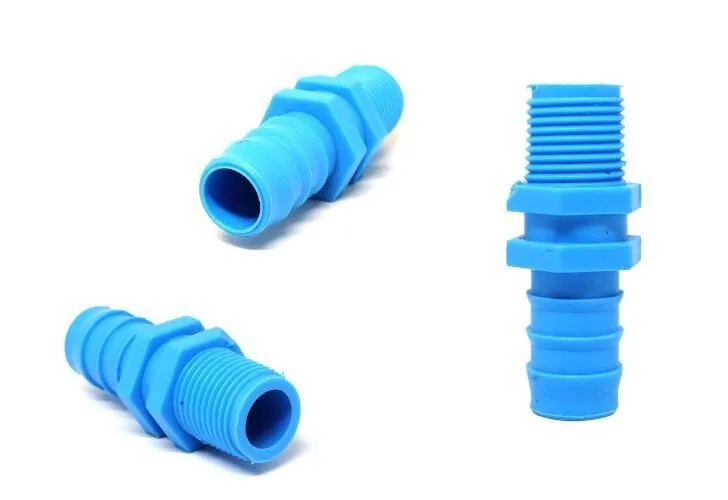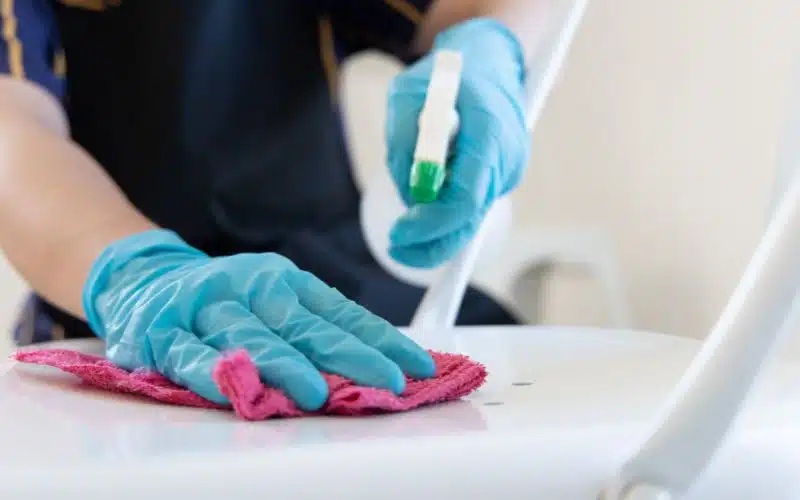No one loves a leaky water system. Compression fittings are an essential plumbing material that comes in handy regarding water sealing and durability.
The PVC compression fitting is a good alternative to the metallic ones, as they are lightweight and capable of high-pressure operations.
How long do PVC compression fittings last with all these outrageous features?
PVC compression fittings can last about 100 years, depending on maintenance and other external factors like sunlight and vibration. Continuous exposure to sunlight can damage this compression fitting, while vibration releases the pipe from the ferrule’s grip. Improper installation and handling shorten the lifespan of PVC Compression Fitting too.
How Long Do PVC Compression Fitting Last?

Due to its durability, PVC compression fitting can last for over 50 years. However, there will be a gradual reduction of the PVC’s lifespan if it is subjected to destructive agents and installed improperly.
It has resistance to chemical attacks. Sunlight destroys virtually all PVC materials.
The sun’s UV rays alter PVC’s structure till it gradually brittles the material and makes it breakable. Unfortunately, the damage sunlight will cause isn’t reparable.
Unlike sunrays, incorrect installation sometimes causes reparable damages, where you’ll use an adhesive to mend the breakage. In some cases, the PVC compression isn’t reparable.
Are Compression Plumbing Fittings Reliable?
Compression plumbing fittings are reliable when comparing them with threaded fittings. They come in different sizes and materials to meet your needs. Besides, they last long and have high durability.
Let’s see some of the factors that enhance their reliability.
#1. Easy Installation
The installation of compression Fittings for plumbing is a piece of cake. Their installation is soldering-free and doesn’t demand any special tool except two adjustable spanners.
It’s a simple, straightforward project that only requires inserting the pipes into the ferrule and fitting and tightening the nut appropriately.
#2. Effectiveness
Compression fittings come in handy when soldering is impossible for joining pipes and water sealing them.
When properly installed, they tend to function properly and last long. Furthermore, you could use Polytetrafluoroethylene tape (PTFE tape) on the fitting’s thread to seal the joint for longevity.
#3. They’re Reusable
Plumbers prefer compression fittings because they don’t have to buy joints since you can reuse them severally.
However, consider changing the ferrule when you want to reuse the joint, as the ferrule might be unsuitable for use.
It will ensure that the joint holds the pipes well since the previous one might be weak for reuse.
Although, not all compression fittings permit reuse, especially the metal ones that are rusty or seriously bad.
#4. Pocket-Friendliness
Compression fittings are cheaper compared to other pipe joints. They don’t go bad easily unless they experience a damaging mechanical attack.
Due to their low cost, many industries and homes prefer compression fittings for plumbing and water distribution.
#5. Easy to Disassembly
Disassembling compression fittings is as easy as assembling them. There’s no need for technical know-how before you can disassemble the fitting for repair or adjustment.
Most times, all you need is two adjustable spanners to loosen the ferrule.
Why Do Compression Fittings Fail?
There are various reasons why your compression fittings fail. They include; Improper mode of use and over-tightening of the compression fitting.
Those factors can cause compression fittings to fail. In some cases, it could be because of the wrong position of the pipes in the fitting joint.
#1. Improper Use
Compression fittings are only suitable for pipes that are stationary or seldom move. When the pipes start moving continually, the compression fitting could leak.
But for a long-lasting compression fitting, don’t move the pipes. Also, make sure your kids don’t play where the pipes are.
#2. Overtightening
Overtightening is the most common reason for failure in compression fittings. When you tighten the nut beyond necessary, it damages the ferrule and causes the joint to fail.
It’s advisable to tighten the nut with bare hands until the ferrule resists movement to prevent compression fitting failure.
Then you use an adjustable spanner to tighten the nut by one-half of a complete turn. If you notice leakage, keep tightening until there is no more leakage.
Handling the ferrule demands extreme care because it’s the most delicate part of compression fittings and is prone to damage.
Hence to prevent the compression fitting from leaking, you shouldn’t turn the spanner for more than 180° or half of a complete turn.
#3. Bad positioning of the pipe
Sometimes, the fault could be on one or both pipes when set wrongly. Wrong positioning makes it difficult for the compression fitting to be a good seal.
Thus to stop the leakage, remove the wrongly placed pipe (s), and insert it properly into the compression fitting.
For accuracy, work in the pipe till nearly ⅛ inch of the pipe is out of the compression ring. Now, you can tighten it correctly and turn on the water supply to see if the leaking has stopped.
How Much Pressure Can a PVC Compression Fitting Hold?
PVC compression fittings can hold pressure as much as 10,000 psi, making them one of the perfect materials for high-pressure applications.
However, it functions alongside steel or other high-pressure piping materials. Additionally, due to the smooth body of PVC compression fittings, there is no restriction on their water flow.
As a result, water with very high pressure can pass through this fitting without hindrance.
The pressure that PVC compression fittings would occupy depends on the diameter of the pipe conveying the water.
Here’s a table showing different nominal sizes of pipes and their respective working pressure.
| Nominal pipe size (inches) | Schedule 40 max pipe working pressure (psi) | Schedule 80 max pipe working pressure (psi) |
|---|---|---|
| ½” | 600 | 509 |
| ¾” | 480 | 413 |
| 1″ | 450 | 378 |
| One ¼” | 370 | 312 |
| 1 ½” | 330 | 282 |
| 2 | 280 | 243 |
| 2 ½” | 300 | 255 |
| 3 | 260 | 225 |
| 4 | 220 | 194 |
| 6 | 190 | 173 |
| 8 | 180 | 167 |
| 10 | 160 | 148 |
| 12 | 140 | 140 |
| 130 | 137 |
Can Compression Fittings Leak Over Time?
Compression Fittings can leak after some time. It could be a result of tightening the compression nut with excess force.
When you overtighten the compression fitting, excess force deforms the compression ring, damaging the fitting and leaking.
One common error people make that eventually leads to leakage is connecting plastic pipes with metal compression rings.
During installation, the metal compression fitting will shrink the plastic pipes and possibly break them. Eventually, water finds its way through the broken pipe and causes leakage.
Also, if one of the components of the compression fitting is broken or worn out, it will affect the whole compression fitting, and leaking begins.
That’s why it’s important to always check the parts of the compression fitting before reusing them. Although installing fittings is quite easy, some costly mistakes could occur.
Mistakes like wrongly placing the joint while installing would cause water to leak through the joint. To end the leaking, you must correct the position of the pipes.
How Do I Stop My PVC Compression Fitting From Leaking?
There are several ways of stopping leaks in PVC compression. To stop your PVC compression fitting from leaking, you must first identify the cause.
Once you’ve located the cause, you can delve into putting a stop to the leakage.
#1. Loosen and Tighten the Fitting
If the fitting has no broken part, consider loosening the ferrule and tightening it again.
But before loosening, turn off the power supply to prevent messing up the place. Meanwhile, you can use a bucket to collect the remaining water in the pipes.
The pipes might enter at an angle, hence not aligning properly. Consequently, the ferrule won’t be a good seal and will leak.
Loosening the joint is a way of correcting the mistakes during the initial installation. Tighten the nut gradually with your hands till movement becomes difficult.
Use the adjustable spanner to gradually tighten the nut when your hands can no longer tighten the nut.
It will prevent further damage in the fitting. Now, turn on the water and see if there are leaks.
#2. Replace the Compression Fitting
In cases where the fitting is not in good condition, the only way out is a replacement. Any broken part in the joint affects the whole fitting because all three components work together.
First, turn off the water inlet to remove the faulty compression fitting and get two pairs of adjustable pliers.
Using the first spanner, turn the nut while the other will hold the pipe down to stop it from moving with the nut. Turn the nut clockwise while the pipe remains in its position.
Immediately after the nut turns, loosening the ferrule becomes easy because you can loosen the nuts completely with your hand.
After loosening with your hand, separate the fitting and detach the ferrule from the pipe. Replace the compression fitting with a new one and reassemble the fitting.
#3. Using Epoxy
If you didn’t consider replacing the damaged joint, adhesives also come in handy when stopping leaks.
To apply epoxy, you must clean and dry the damaged area. Mix the epoxy; if you’re using epoxy for the first time, follow the Manufacturer’s directions on how to use it.
Apply the epoxy mixture to the damaged area and leave the glued area for 10 minutes to cure. Upon curing, turn on the water and check for leaks.
Final Thoughts
PVC compression fittings last a very long time if they aren’t destroyed or deteriorated. However, sunlight is a prominent destructive agent of PVC compression fittings.
Besides, the wrong installation of the wrong fittings could damage them and even cause leakage. Nevertheless, PVC joints are in good condition and tend to be user-friendly.





